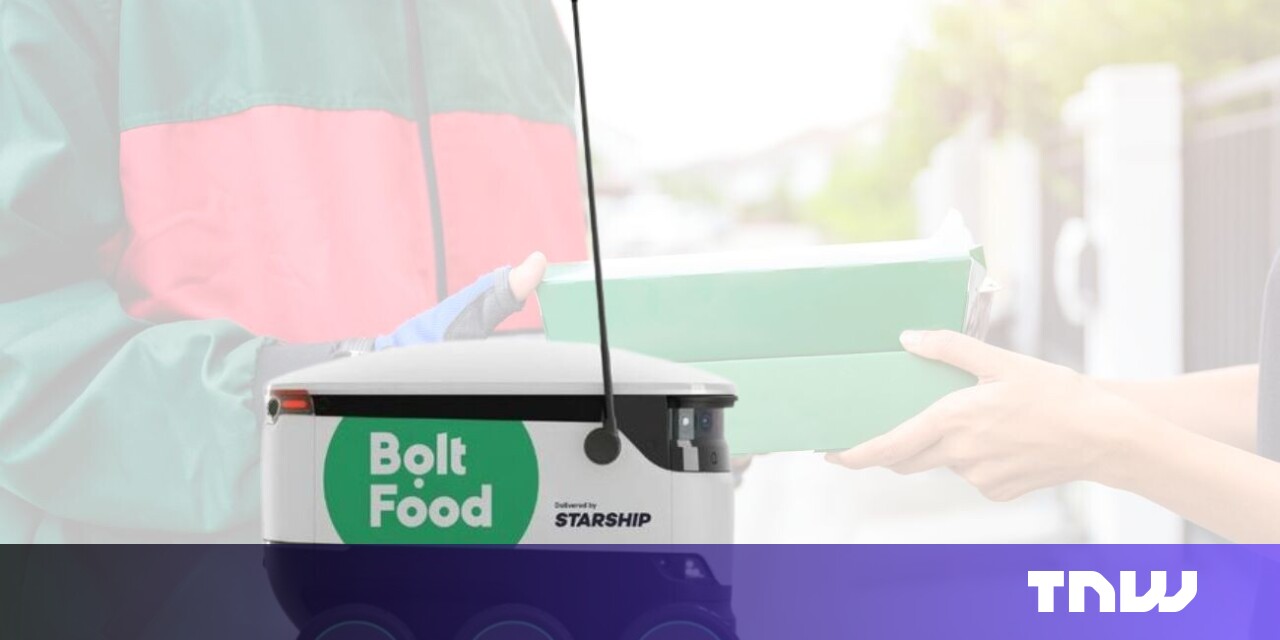Bolt Uses Starship Robots for Food Delivery: A New Era of Autonomous Delivery?
Revolutionizing food delivery, Bolt, the popular ride-hailing and food delivery app, has partnered with Starship Technologies to introduce autonomous robots for food delivery in several key cities. This innovative move promises faster, more efficient, and arguably more sustainable delivery options for customers.
The integration of Starship's robots into Bolt's existing delivery network marks a significant step towards a future where autonomous vehicles play a central role in last-mile logistics. This partnership isn't just about speed; it's about addressing key challenges facing the food delivery industry today, including high delivery costs, traffic congestion, and environmental concerns.
How Does It Work?
The process is remarkably straightforward. Customers place their orders through the Bolt app as usual. Once the order is prepared by the restaurant, a Starship robot is dispatched to pick it up. Using advanced GPS technology and a suite of sensors, the robot navigates sidewalks and streets to deliver the food directly to the customer's specified location. Customers receive real-time updates on the robot's progress via the app. Upon arrival, customers unlock the robot's insulated compartment using a unique code provided through the app to retrieve their order.
Benefits of Robot Food Delivery
This innovative approach offers numerous advantages:
- Faster Delivery Times: Robots can often navigate congested areas more efficiently than human drivers, leading to significantly faster delivery times, especially during peak hours.
- Reduced Costs: The automation inherent in using robots reduces labor costs associated with human delivery drivers. This could potentially translate to lower delivery fees for customers.
- Increased Efficiency: Robots can operate for longer periods without needing breaks, leading to a more efficient delivery system overall.
- Environmental Friendliness: Starship robots are electric and significantly reduce the carbon footprint associated with traditional delivery methods. This contributes to a more sustainable approach to food delivery.
- Improved Safety: By operating on sidewalks and avoiding traffic, these robots contribute to improved road safety.
Challenges and Future Implications
While the potential benefits are considerable, the integration of robots into the food delivery landscape also presents certain challenges:
- Infrastructure Limitations: The success of robot delivery depends on the availability of suitable infrastructure, including well-maintained sidewalks and pedestrian-friendly environments.
- Public Acceptance: Public perception and acceptance of robot delivery are crucial for widespread adoption. Overcoming any apprehension or concerns about safety and privacy will be vital.
- Regulatory Hurdles: Navigating regulations and obtaining necessary permits for robot operation in different cities and countries can prove complex.
The partnership between Bolt and Starship Technologies is a bold move that could reshape the future of food delivery. This initiative showcases the potential of autonomous technology to solve real-world problems, improve efficiency, and contribute to a more sustainable world. The success of this venture will be closely watched by other companies in the food delivery and logistics sectors, potentially inspiring widespread adoption of similar technologies. It remains to be seen how quickly this technology will expand, but the initial rollout is a compelling demonstration of the potential of autonomous delivery.
Keywords: Bolt, Starship Technologies, food delivery, autonomous robots, robot delivery, last-mile logistics, sustainable delivery, technology, innovation, delivery robots, future of delivery, AI, automation
Call to Action: Download the Bolt app and experience the future of food delivery today! (Link to Bolt app download)

